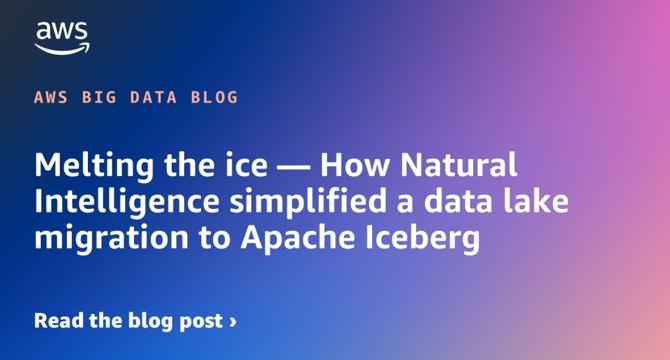Amazon
1M
295

Image Credit: Amazon
Melting the ice — How Natural Intelligence simplified a data lake migration to Apache Iceberg
- Natural Intelligence (NI) shares their journey of transitioning their legacy data lake from Apache Hive to Apache Iceberg, focusing on the practical approach and challenges faced.
- NI's architecture followed the medallion architecture with bronze-silver-gold layers, but it lacked flexibility for an open data platform, leading to the choice of Apache Iceberg.
- Apache Iceberg provided benefits like decoupling storage and compute, vendor independence, and wide platform support, enabling NI to create a flexible, multi-query engine data platform.
- Challenges in migrating to Iceberg included operational complexities, diverse user requirements, and legacy tool constraints, leading to the need for a strategic migration plan.
- Key pillars for the migration included supporting ongoing operations, user transparency, gradual consumer migration, ETL flexibility, cost effectiveness, and minimizing maintenance.
- Traditional migration approaches supported by Iceberg are in-place and rewrite-based migration, each with its advantages and disadvantages.
- NI developed a hybrid migration strategy combining elements of both traditional approaches to achieve a smooth transition while minimizing limitations.
- The hybrid solution included Hive-to-Iceberg CDC, continuous schema synchronization, Iceberg-to-Hive reverse CDC, Snowflake alias management, and table replacement for a seamless migration.
- Technical deep dives covered steps like partition-level synchronization, schema reconciliation, alias management in Snowflake, and using AWS services for orchestration and state management.
- The migration outcome was successful with zero downtime, cost optimization, modernized data infrastructure, and a vendor-neutral platform supporting analytics and machine learning needs.
- By sharing their Iceberg migration journey, NI demonstrated the importance of careful planning, embracing open formats, automation, and organizational-first approach for successful data infrastructure modernization.
Read Full Article
17 Likes
For uninterrupted reading, download the app